I'm working on an app that is ideally targeted all the way down to iOS 3.2. Still, I am developing it on Lion and with the latest 5 sdk. As far as I know, I am not using any sdk 5 specific features. But:
on any devices with iOS 5 or the simulator (set to v.5), the app works just fine. on any devices with iOS 4.3 or below (and the same goes for the simulator set to v. 4.3), several things that have to do with view frames get misaligned.
For instance, here's 2 examples:
An activity indicator inside an alert view. Here's the code:
NSURLConnection *urlConnection = [[NSURLConnection alloc] initWithRequest:fileRequest delegate:self];
if(urlConnection)
{
uistatusDialog = [[UIAlertView alloc] initWithTitle:(description ? NSLocalizedString(description, nil) : NSLocalizedString(@"Downloading", nil))
message:nil
delegate:nil
cancelButtonTitle:nil
otherButtonTitles:nil];
UIActivityIndicatorView *indicator = [[UIActivityIndicatorView alloc] initWithActivityIndicatorStyle:UIActivityIndicatorViewStyleWhiteLarge];
indicator.autoresizingMask = (UIViewAutoresizingFlexibleLeftMargin |
UIViewAutoresizingFlexibleRightMargin |
UIViewAutoresizingFlexibleTopMargin |
UIViewAutoresizingFlexibleBottomMargin);
[indicator startAnimating];
[uistatusDialog addSubview: indicator];
[uistatusDialog show];
[indicator release];
And here are screenshots for both simulators:iOS 5: correct
 iOS 4.3: misaligned
iOS 4.3: misaligned

Similar things are happening with labels for which I set frames through [UILabel alloc]initWithFrame:CGRectMake(...].
This code, for instance:
UITableViewCell * cell = [[[UITableViewCell alloc] initWithStyle:UITableViewCellStyleDefault
reuseIdentifier:reuseIndentifier] autorelease];
cell.accessoryType = UITableViewCellAccessoryDisclosureIndicator;
cell.selectionStyle = UITableViewCellSelectionStyleGray;
UILabel* mainLabel = [[[UILabel alloc] initWithFrame:CGRectMake(70, 0, 0, 20)] autorelease];
mainLabel.font = [UIFont boldSystemFontOfSize:(UI_USER_INTERFACE_IDIOM() == UIUserInterfaceIdiomPad ? 18 : 12)];
mainLabel.textAlignment = UITextAlignmentLeft;
mainLabel.textColor = [UIColor blackColor];
mainLabel.backgroundColor = [UIColor clearColor];
mainLabel.autoresizingMask = (UIViewAutoresizingFlexibleHeight |
UIViewAutoresizingFlexibleWidth |
UIViewAutoresizingFlexibleRightMargin);
//mainLabel.adjustsFontSizeToFitWidth = YES;
mainLabel.tag = MAINLABEL_TAG;
Aligns just fine in iOS5, both for the simulators and devices. But in 4.3 it doesn't. I can only think that the local coordinate frame changed from one SDK to the next?
Any help is greatly appreciated!
EDIT: Just to pull it off for now, I did end up replacing all instances of CGRectMake(x,y,w,h) with something along the lines of (assuming x,y,w,h are the ones I would have used for CGRectMake):
CGrect refFrame = superview.frame;
refFrame.origin.x += x;
refFrame.origin.y += y;
refFrame.size.w = w;
refFrame.size.h = h;
theObjInQuestion.frame = refFrame;
So essentially, looks like a different frame of reference is being used between SDK 5 and 4.3 at least...